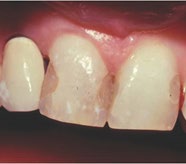Tech Briefs
Savannah River National Laboratory
Use of Titanium-Based Materials as Bactericides
Working with the University of Washington School of Dentistry, new materials containing titanium and a small amount of other metals can stop the growth of certain bacteria.
Background
The metal ion suppression of bacterial growth is well known. However, levels of the anti-bacterial metal ions required to achieve a therapeutic reduction in bacteria growth are typically at a level that will produce undesirable side effects in mammals. The use of metal ions to control bacterial infections remains of interest as drug-resistant bacteria are becoming increasingly common and dangerous to human health. This technology provides a safe and effective metal-titanate bacterial inhibitors.

At a glance
- Extends life of restorative fillings
- Stops growth of certain bacteria
- Potential use in other medical ointments, bandages, etc.
- U.S. Patent 8,545,820
How it works
Results show unequivocally that metal-titanate compounds inhibit planktonic bacterial growth and the titanates enhance the ability of metal ions to inhibit growth, pending specific conditions. By themselves, sodium titanates (MST or APT) have no effect on planktonic growth of several oral bacterial species, but that inhibitation of growth is possible when metal titanates are loaded onto the Monosodium Titanate (MST) or Amorphous peroxo-titanate (APT).
Working with researchers at the University of Washington (UW) School of Dentistry, these materials have been shown to limit the growths of bacterial commonly found in the mouth. It is believed that oral bacteria, which come into contact with restorative fillings, attack the weak link between the tooth and the filling resulting in cavaties and the need to replace the filling prematurely. Based on tests it is believed that the titanate/metal materials may be an effective additive to extend the life of restorative fillings. Currently the UW researchers are testing this idea with volunteers using a material that contains titanium and a small amount of gold prepared at SRNL.
Stage of development
This technology is in early stage research and development with ongoing testing and experimentation underway. Metal ions having an ability to suppress bacterial growth have the potential to be utilized with the titanate delivery system by incorporating into traditional medical ointments, bandages, implantable biomaterials, coatings on invasive apparatuses such as catheters, shunts, and similar devices to prevent or limit bacterial infections. The metal-loaded titantates are believed to be compatible with traditional antibiotic ointments and creams, and may be incorporated as coatings on surgical suture material to help suppress growth and/or formation of bacterial infections.
The patent discloses that a solid-phase titanate material containing a metal ion such as gold(III), platinum(II), platinum(IV), and palladium(II) can serve as an effective antibiotic against a variety of oral-based bacteria. Growth inhibition ranged from 15 to 100% depending on the metal ion and bacterial species involved. Furthermore, in specific cases, the titanates inhibited bacterial growth 5- to 375-fold versus metal ions alone, suggesting that titanates enhanced metal–bacteria interactions. Thus, the materials could be used as part of a mouthwash, toothpaste, oral rinse, or oral gel to assist in reducing the frequency or progression of caries, for treating bacterial-associated periodontal disease, and for preventing endodontic infections.
Partnering Opportunities
SRNL invites interested companies with proven capabilities in this area of expertise to develop commercial applications for this process under a cooperative research and development agreement (CRADA) or licensing agreement. Interested companies will be requested to submit a business plan setting forth company qualifications, strategies, activities, and milestones for commercializing this invention. Qualifications should include past experience at bringing similar products to market, reasonable schedule for product launch, sufficient manufacturing capacity, established distribution networks, and evidence of sufficient financial resources for product development and launch.
Download Tech Brief
Contact Information
Savannah River National Laboratory
E-mail: partnerships@srnl.doe.gov